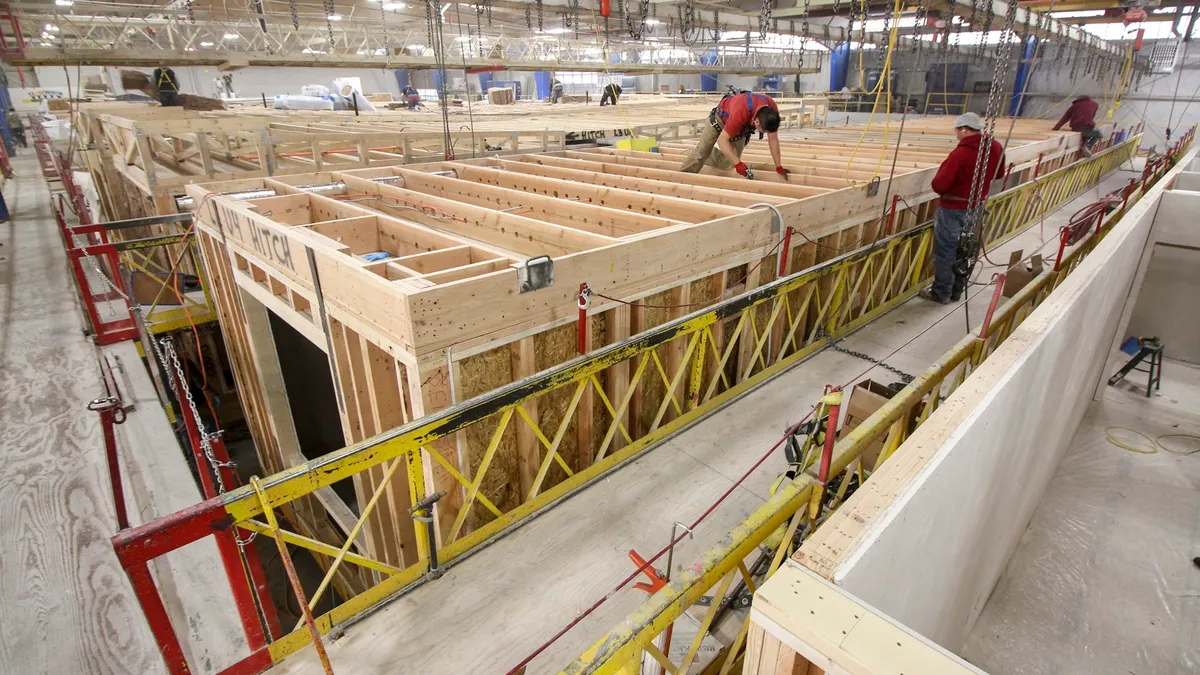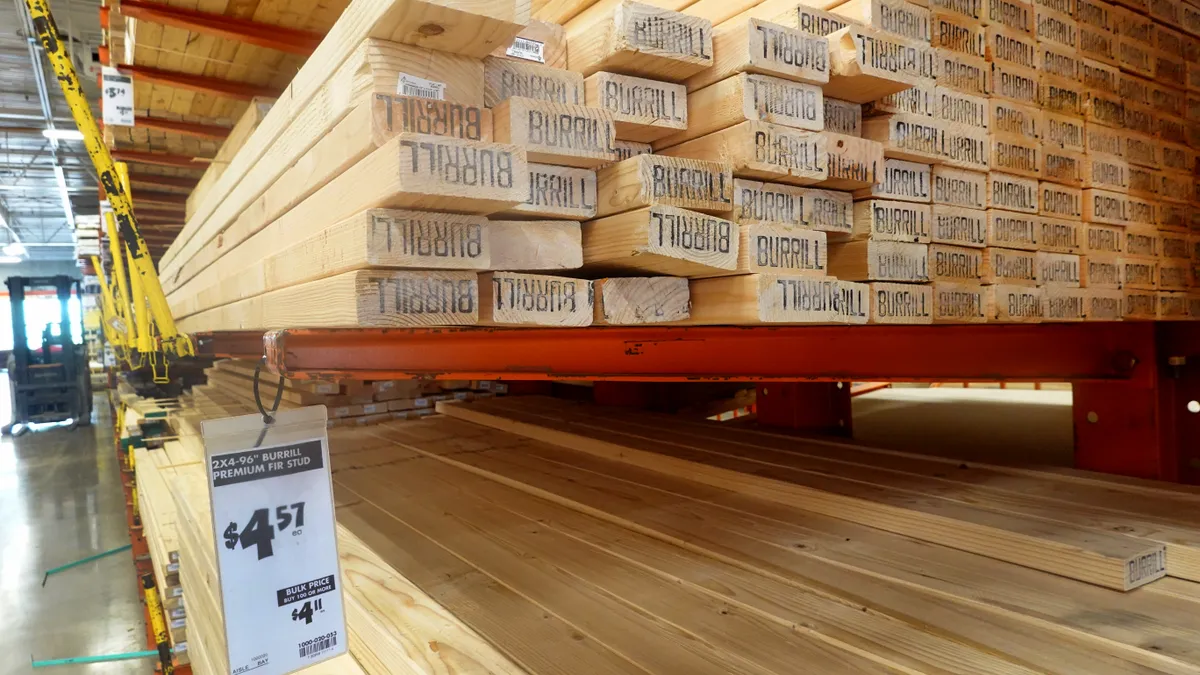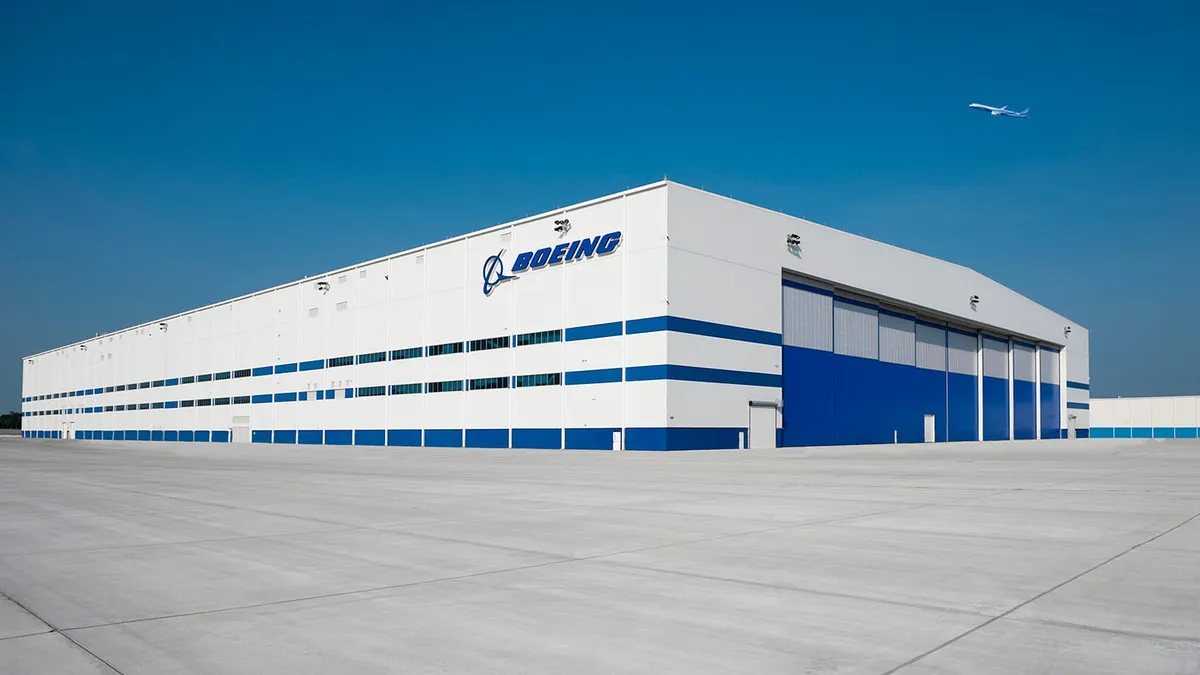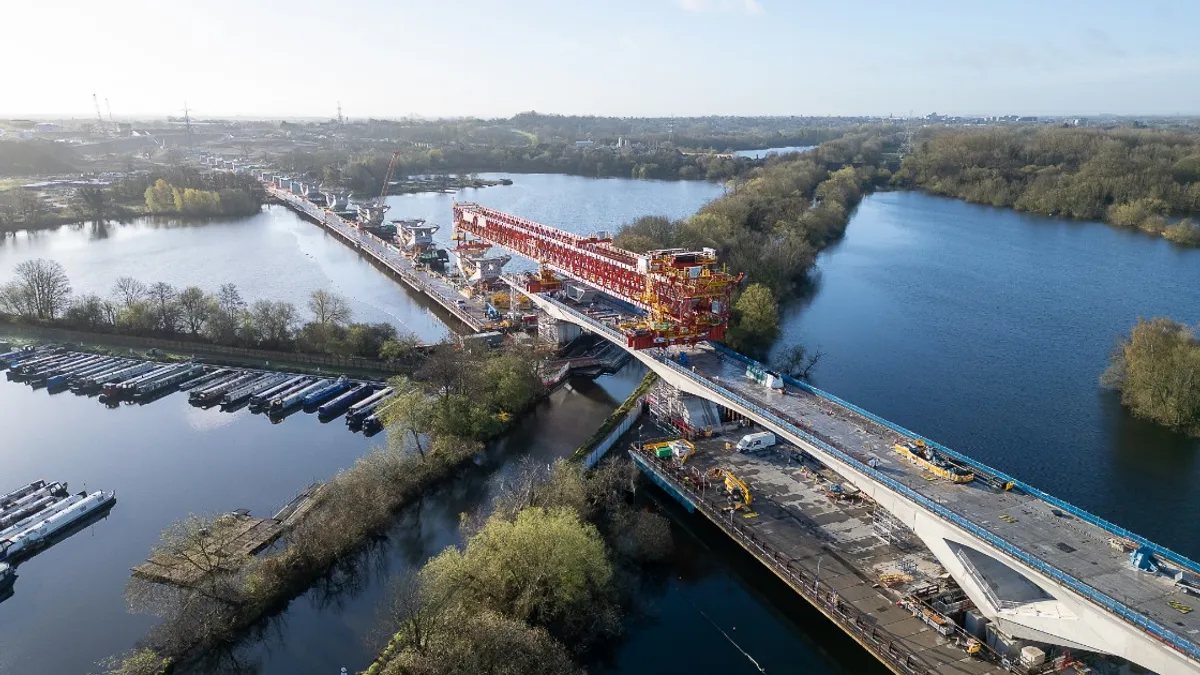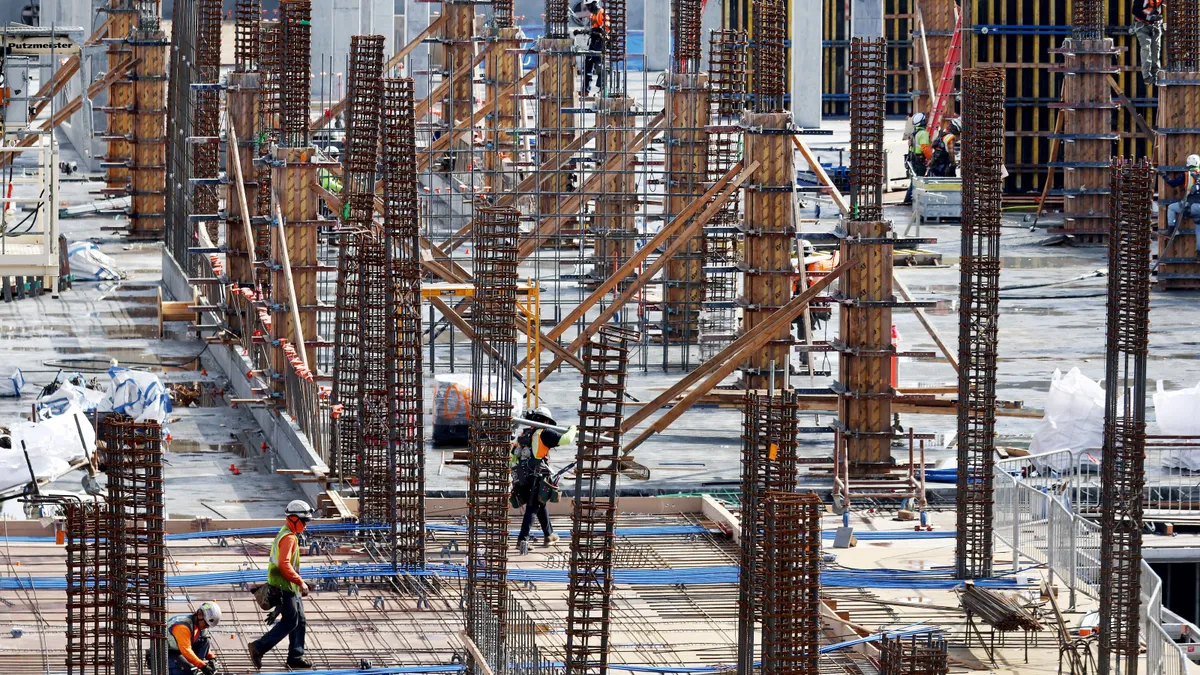Call it what you want, offsite construction isn't going anywhere — except to more jobsites.
The construction industry’s productivity woes are nothing new to the companies trying to solve the problem. While the agriculture and manufacturing sectors have seen productivity gains upwards of 1,000% since the 1940s, construction has lagged behind at 6% growth as of 2016, according to Steffen Fuchs, a partner at research firm McKinsey & Company, speaking at the recent World of Modular conference in Hollywood, Florida.
Part of the problem, Fuchs said, is that the industry hasn’t invested enough in research and development — the kind of R&D that could give valuable insight into how to complete projects more quickly and more efficiently and that could boost the prefabricated construction market.
“Ninety-eight percent of projects run over cost and over schedule. But we found that every single increase in productivity increases margin,” Fuchs said. “If we address cost issues and schedule issues we actually see productivity goes up, which means margins go up, which probably means we all make more money — more money means people can invest in more things.”
And, for Fuchs, that investment might best be put toward technology, like prefabrication.
“[Prefabrication] is one segment where the industry has a massive opportunity to improve,” he said.
According to McKinsey data, prefabrication has the ability to boost construction’s productivity up to 10 times. And the companies that are maximizing that opportunity, Fuchs said, are those — like Katerra — that have integrated the supply chain. Whether other companies will borrow from Katerra’s or others’ model remains to be seen, but suppliers are already growing their stake in the offsite game for the first time.
Better system, better product
Though offsite construction has seen success in a number of iterations across the globe, the method has been slow to gain popularity in the U.S.
Still, more developers are turning their focus to offsite in the face of pressures from limited resources and a need to drive greater productivity under increasingly tighter constraints. And the conference’s organizer, the Modular Building Institute (MBI), aims to foster that trend by focusing its efforts on growing the commercial modular building sector’s market share from 2.5% of all new starts to 5% by 2020.
To do so, the industry is going to have to look inward at perfecting the way offsite project teams’ stakeholders collaborate.
According to a survey by Ryan Smith and Ivan Rupnik, professors at the University of Utah and Northeastern University, respectively, AEC professionals and owners agree that schedule reduction is a primary advantage of offsite construction.
Despite that commonality, the mindset of favoring traditional construction methods and a lack of knowledge about how to carry out offsite projects effectively are holding back the delivery method.
“We found that a lot of [respondents] were absolutely satisfied with the quality of the [prefabricated] permanent modules, what they aren’t satisfied with is the installation,” Smith said during the conference, which attracted industry representatives from 26 countries. “The question is ‘what can we do, as an industry, to help certify flyers and installers of modules to meet that quality standard?’ Otherwise, at the end of the day, that’s what falls apart.”
Collaboration is key
For industry professionals, the solution can also be found in better collaboration.
“This is a great opportunity to bring us together and all collectively learn what’s available and to think about the partnerships and the ecosystems where you bring them to life,” Fuchs said.
Industry collaboration is on the rise, according to Tom Hardiman, the MBI’s executive director, that shift has been the biggest trend the organization has seen in recent years. While projects, even as recent as five years ago, were still divided between modular or conventional construction, projects are becoming more of a hybrid of the two processes.
That shift can be partially attributed to the industry’s need to up productivity with a limited talent pool.
“There is a strong correlation between construction demand, lack of labor and the uptick in the use of permanent modular construction,” Rupnik said. Prefabricating elements of a project can take an estimated 40% to 60% of work off the jobsite — and those savings can be a significant boon for contractors and developers looking to expedite their schedules.
And as more big-name companies like Turner Construction and Gilbane look to capitalize and expand on those benefits by having project managers for offsite, the industry is likely to see increased momentum behind the delivery method.
No panacea, but maybe one answer
Though offsite has proven to reduce project costs and timelines in some instances, the industry should focus on the delivery quality of offsite, according to Osama Moselhi, a professor in civil engineering at Concordia University in Montreal.
“In prefabrication you are able to look at the quality of what you are producing in an environment that will help ensure such quality, as opposed to a harsh environment outdoors. In that process, if you’re saving time, indirectly you’re saving money,” Moselhi said during a session at the World of Modular conference.
Apart from being shielded from potential weather-related setbacks, offsite’s factory-based setting is conducive to speedier and more precise construction that can also be more environmentally friendly and safer for workers.
A McGraw Hill Smart Market Report on Prefabrication and Modularization found that 58% of those using offsite said they employedthe method because of increased project safety. Nearly half of non-users said they would likely work with modular to ensure a safer worksite.
Though construction companies’ reasons for adopting the method may vary, offsite’s growing stake in the commercial market is expected to hold. A 2014 report from the National Institute of Building Sciences found that 93% of AEC professionals surveyed said they had used offsite methods in the past year. And as more interest in the sector ratchets up, that number only stands to grow.
“[Prefabrication] isn’t a panacea, but it could be an answer,” Moselhi said.


